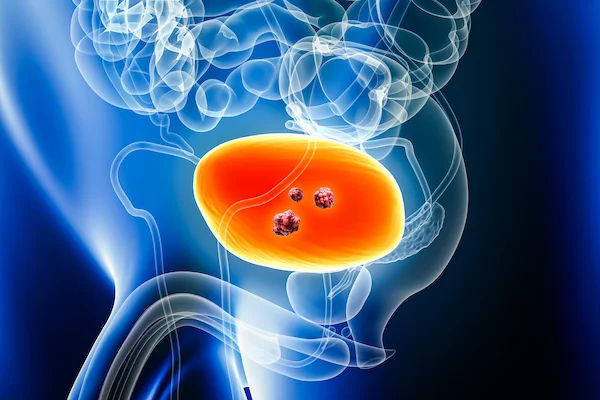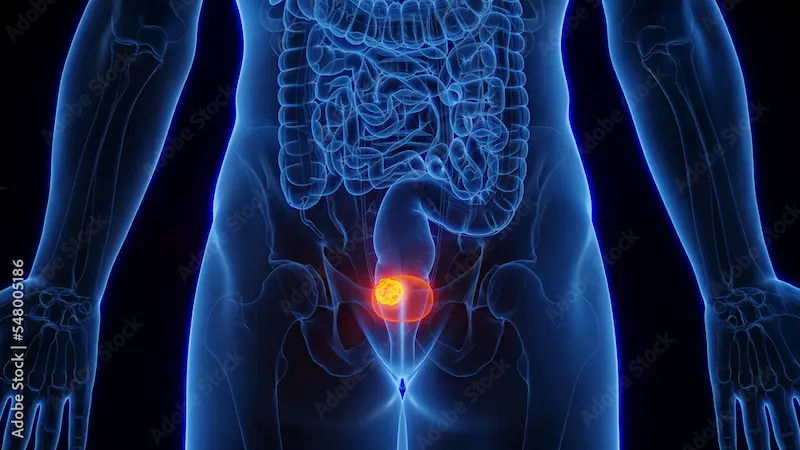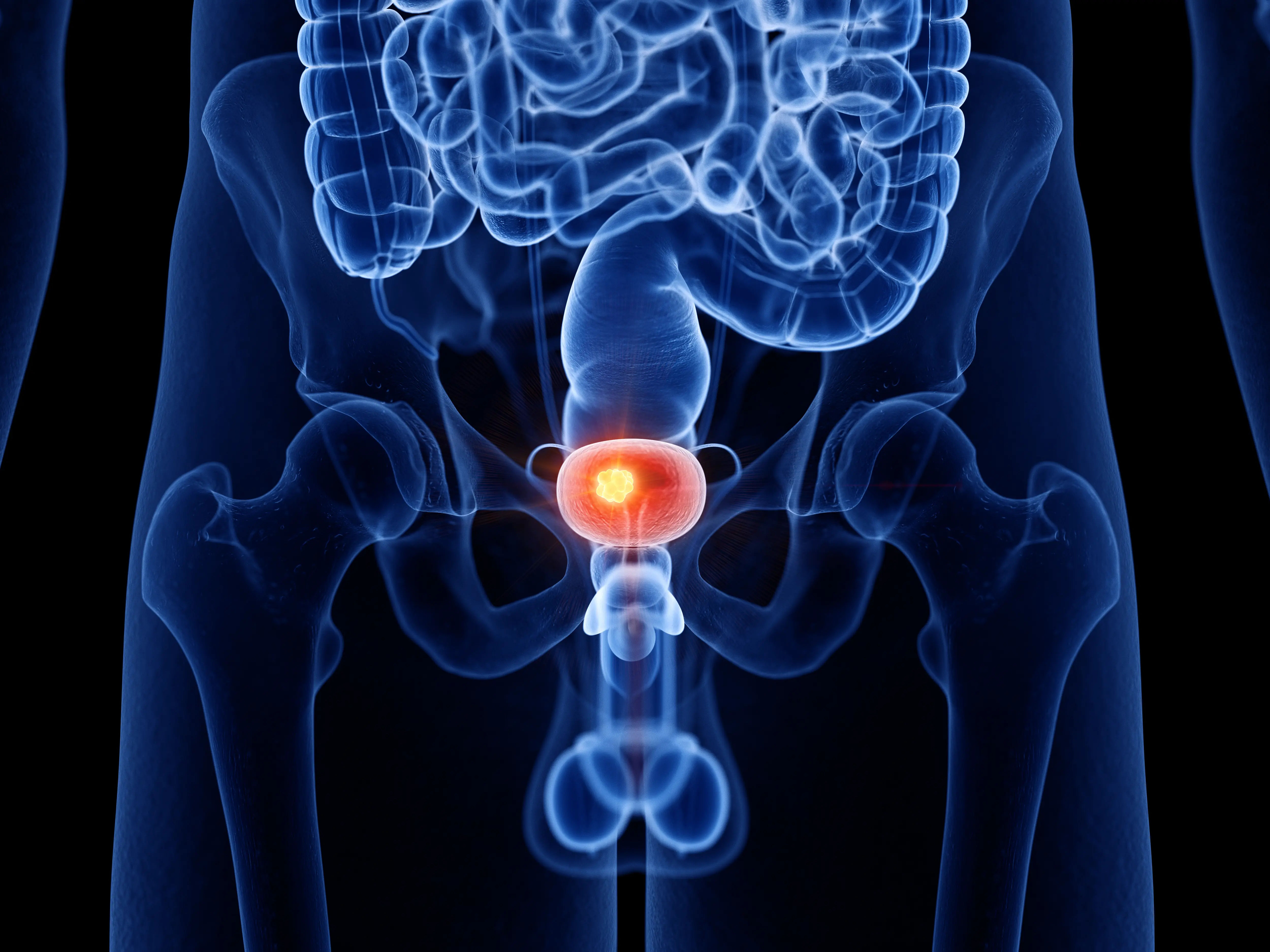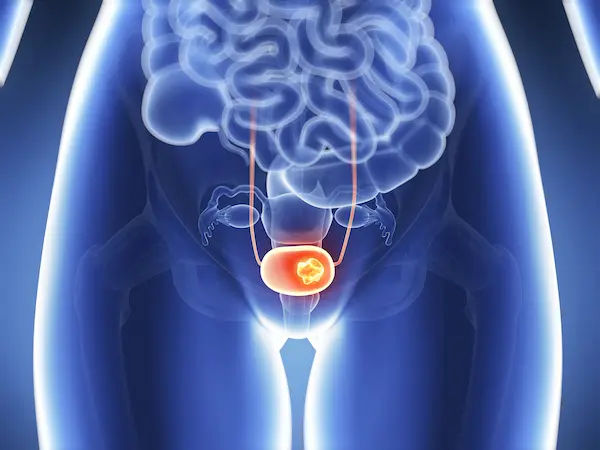Signs of Urinary Bladder Cancer: Don't Ignore These Key Symptoms
Learn the early and advanced signs of urinary bladder cancer, including blood in urine, urinary changes, pain, and risk factors. Early detection can save lives.

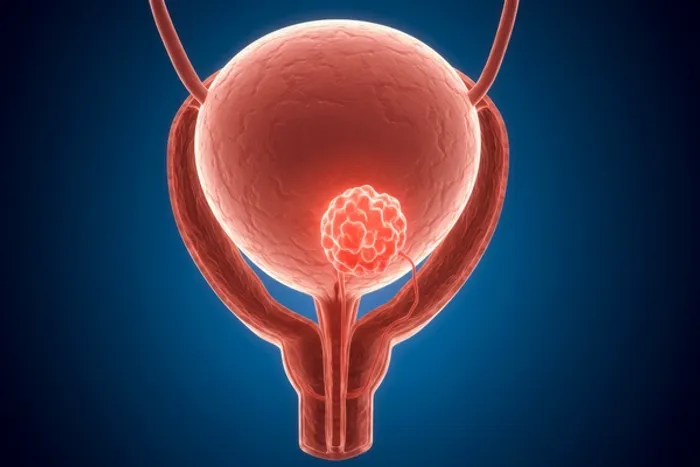
Introduction
Noticing a change in your bathroom habits can be unsettling. While often linked to common issues like a urinary tract infection (UTI), certain symptoms can be your body's first alert to something more serious, such as urinary bladder cancer. Early detection is paramount in successfully treating bladder cancer, making awareness of its signs critically important. This article will guide you through the key symptoms of bladder cancer, helping you distinguish between benign issues and potential red flags. We'll explore everything from the most common sign—blood in the urine—to more subtle changes in urinary patterns and what they could mean. Our goal is to empower you with knowledge, so you can take proactive steps for your health and know when it's time to consult a healthcare professional.
The Most Common Sign: Haematuria (Blood in the Urine)
The single most frequent and significant sign of urinary bladder cancer is haematuria, or blood in the urine. It's estimated that 80–90% of people diagnosed with bladder cancer will experience visible blood in their urine at some point. This symptom is so prominent that it should never be ignored, even if it happens just once.
Gross Haematuria vs. Microscopic Haematuria
It's crucial to understand that haematuria comes in two forms:
- Gross Haematuria: This is blood that you can see with the naked eye. The urine may appear pink, red, cola-coloured, or even have visible blood clots.
- Microscopic Haematuria: In this case, the blood is only detectable under a microscope during a urinalysis. This form is often discovered incidentally during a routine check-up for another issue.
While gross haematuria is a more immediate cause for concern, both types require a thorough medical evaluation to rule out bladder cancer or other conditions like kidney stones, infections, or kidney disease.
What Does Blood in Urine Look Like?
The appearance can vary. Sometimes it's a bright red streak, indicating active bleeding. Other times, the urine may be a uniform pink or brownish hue, which can mean the blood has been in the bladder for a while. A key point to remember is that the bleeding caused by a bladder tumour can be intermittent. It might be present one day and completely disappear for weeks or even months. This can create a false sense of security, leading people to delay seeing a doctor. Never assume that because the blood has cleared, the problem has resolved itself.
Other Key Urinary Symptoms of Bladder Cancer
While haematuria is the headline symptom, bladder cancer can cause other changes in urinary function. These signs are often mistaken for a UTI or an overactive bladder, especially in women.
Consult an Oncologist for the best advice
Changes in Bathroom Habits: Frequency and Urgency
Tumours in the bladder can irritate the bladder wall, leading to symptoms that mimic an infection. This includes:
- Increased Frequency: Needing to urinate more often than usual, including throughout the night (nocturia).
- Urgency: A sudden, strong, and sometimes uncontrollable need to urinate immediately.
These symptoms occur because the tumour mass reduces the bladder's storage capacity and irritates the nerves that signal the need to void.
Pain and Discomfort: A Sign to Heed
Pain is another symptom that warrants attention. You might experience:
- Dysuria: A burning sensation or pain during urination.
- Pelvic or Back Pain: Discomfort in the lower abdomen, pelvis, or lower back can occur, especially if the tumour is growing or causing obstruction.
It's important to note that these early symptoms of bladder cancer are non-specific. However, if you experience them, particularly if they persist after a course of treatment for a presumed UTI, further investigation is essential to rule out underlying causes like a tumour.
Symptoms of Advanced Bladder Cancer
When bladder cancer grows larger or spreads (metastasises) to other parts of the body, it can cause a different set of symptoms. Recognising these signs of advanced bladder cancer is critical.
When the Cancer Spreads Beyond the Bladder
Advanced disease may present with:
- Inability to urinate: This can happen if a large tumour blocks the urethra.
- Side Pain: Pain on one side of the back, below the ribs, can indicate that the cancer has spread to the kidneys.
- Bone Pain: If the cancer metastasises to the bones.
- Unintended Weight Loss and Loss of Appetite.
- Swelling in the Feet.
- Constant Fatigue and Feeling generally unwell.
The presence of these symptoms underscores the importance of early detection. When caught early, bladder cancer is highly treatable.
Who is at Risk? Understanding the Key Factors
Knowing the risk factors for bladder cancer can help you understand your personal level of vigilance. Some factors are within your control, while others are not.
The #1 Risk Factor: Smoking
Smoking is the most significant risk factor, responsible for about half of all bladder cancer cases. The harmful chemicals in tobacco smoke are absorbed into the bloodstream, filtered by the kidneys, and concentrated in the urine. These carcinogens then sit in the bladder, damaging the lining cells over time and significantly increasing cancer risk.
Occupational Hazards and Chemical Exposure
Certain occupations involving exposure to industrial chemicals pose a higher risk. Workers in the rubber, chemical, leather, textile, and printing industries, as well as hairdressers (due to long-term exposure to hair dyes), may have an increased risk. These risks are linked to exposure to chemicals known as aromatic amines.
Other Contributing Factors
- Age: The risk increases with age, with most people diagnosed over 55.
- Gender: Men are about 3 to 4 times more likely to develop bladder cancer than women.
- Chronic Bladder Inflammation: Repeated urinary infections or long-term use of a catheter may increase risk.
- Previous Cancer Treatment: Certain chemotherapy drugs or radiation to the pelvis can elevate future risk.
- Family History: Although not common, a family history of bladder cancer can slightly increase risk.
When Should You Absolutely See a Doctor?
This is the most critical question. You should consult a doctor if you experience any of the following, especially if they persist for more than a few days:
- You see blood in your urine (haematuria). This is the number one reason to seek immediate medical advice.
- You have persistent urinary changes, such as frequency, urgency, or pain, that do not resolve with treatment for a UTI.
- You experience pelvic or back pain that is unexplained.
If you notice visible blood in your urine, even just once, it is essential to consult a doctor. If symptoms persist beyond two weeks, consult a doctor online with Apollo24|7 for further evaluation and to discuss the need for diagnostic tests. Apollo24|7 offers convenient home collection for tests like urinalysis, which can be a first step in the investigation.
Diagnosis: How Bladder Cancer is Confirmed
If your doctor suspects bladder cancer, they will recommend a series of tests to confirm or rule out the diagnosis.
The First Steps: Urine Tests and Imaging
- Urine Tests: A urinalysis can check for microscopic blood. A more specific test, called urine cytology, examines urine under a microscope to look for cancer cells.
- Imaging Tests: A CT urogram or an ultrasound can provide images of your urinary tract, helping to identify tumours in the kidneys, ureters, or bladder.
The Gold Standard: Cystoscopy and Biopsy
If other tests suggest an abnormality, a urologist will perform a cystoscopy. This procedure involves inserting a thin, lighted tube with a camera (cystoscope) through the urethra to see the inside of the bladder directly. If any suspicious areas are found, the doctor can remove a small tissue sample (a biopsy) for laboratory analysis. This is the definitive way to diagnose bladder cancer.
Conclusion
Understanding the signs of urinary bladder cancer is a powerful form of health empowerment. While the symptoms discussed can be linked to less serious conditions, they are your body's way of signalling that something may be wrong. Haematuria, in particular, is a red flag that demands a professional opinion. By being aware of the risk factors and listening to your body, you can take charge of your health. Early detection dramatically improves treatment outcomes and quality of life. If you recognise any of these signs in yourself or a loved one, do not hesitate. Taking the step to speak with a healthcare provider is the first and most important move toward ensuring your well-being.
Consult an Oncologist for the best advice
Consult an Oncologist for the best advice

Dr. Sanchayan Mandal
Medical Oncologist
17 Years • MBBS, DrNB( MEDICAL ONCOLOGY), DNB (RADIOTHERAPY),ECMO. PDCR. ASCO
Kolkata
MCR SUPER SPECIALITY POLY CLINIC & PATHOLOGY, Kolkata

Dr. Rupam Manna
Radiation Specialist Oncologist
4 Years • MBBS MD(RADIO THERAPY)
Barasat
Diab-Eat-Ease, Barasat

Dr.sanchayan Mandal
Medical Oncologist
17 Years • MBBS, DrNB( MEDICAL ONCOLOGY), DNB (RADIOTHERAPY),ECMO. PDCR. ASCO
Kolkata
Dr. Sanchayan Mandal Oncology Clinic, Kolkata

Dr. Sanchayan Mandal
Medical Oncologist
17 Years • MBBS, DNB Raditherapy, DrNB Medical Oncology
East Midnapore
VIVEKANANDA SEBA SADAN, East Midnapore

Dr. Alakananda Choudhury
Radiation Specialist Oncologist
6 Years • MBBS, MD ( Radio Therapy )
Barasat
Diab-Eat-Ease, Barasat
Consult an Oncologist for the best advice

Dr. Sanchayan Mandal
Medical Oncologist
17 Years • MBBS, DrNB( MEDICAL ONCOLOGY), DNB (RADIOTHERAPY),ECMO. PDCR. ASCO
Kolkata
MCR SUPER SPECIALITY POLY CLINIC & PATHOLOGY, Kolkata

Dr. Rupam Manna
Radiation Specialist Oncologist
4 Years • MBBS MD(RADIO THERAPY)
Barasat
Diab-Eat-Ease, Barasat

Dr.sanchayan Mandal
Medical Oncologist
17 Years • MBBS, DrNB( MEDICAL ONCOLOGY), DNB (RADIOTHERAPY),ECMO. PDCR. ASCO
Kolkata
Dr. Sanchayan Mandal Oncology Clinic, Kolkata

Dr. Sanchayan Mandal
Medical Oncologist
17 Years • MBBS, DNB Raditherapy, DrNB Medical Oncology
East Midnapore
VIVEKANANDA SEBA SADAN, East Midnapore

Dr. Alakananda Choudhury
Radiation Specialist Oncologist
6 Years • MBBS, MD ( Radio Therapy )
Barasat
Diab-Eat-Ease, Barasat
More articles from Bladder Cancer
Frequently Asked Questions
Can you have bladder cancer without blood in your urine?
Yes, it is possible, though less common. Some people may only experience other symptoms like urinary frequency, urgency, or pain. In early stages, microscopic haematuria might be the only sign, which is invisible to the eye.
What is the difference between UTI and bladder cancer symptoms?
The symptoms can be identical, which is why it's easy to confuse them. The key difference is that UTI symptoms usually resolve with antibiotics. If symptoms like frequent urination or burning persist after treatment, it's a strong indicator that another cause, like bladder cancer, needs to be investigated.
Is bladder cancer curable if found early?
Yes. The five-year survival rate for bladder cancer that is diagnosed while it is still localised (has not spread beyond the bladder) is very high, often over 90%. This highlights the life-saving importance of early detection.
What does bladder cancer pain feel like?
In early stages, pain may be a burning sensation during urination. As cancer advances, it can cause a more persistent ache in the lower abdomen, pelvis, flank, or back. Bone pain may occur if the cancer has spread.
Are the signs of bladder cancer in women different from men?
The core signs—haematuria, urinary changes, pain—are the same. However, because women are more prone to UTIs, their bladder cancer symptoms are more frequently misdiagnosed initially, leading to a potential delay in diagnosis. Women should be especially vigilant if UTI-like symptoms do not clear up with standard treatment.
